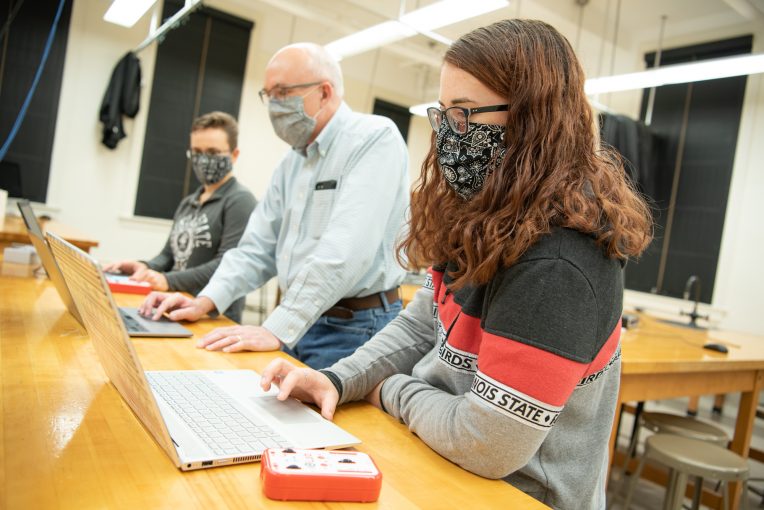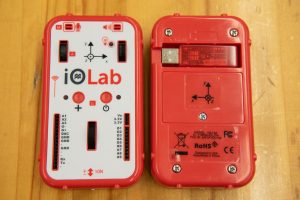There’s an unwritten agreement between scientists to advance the industry for future generations. Thomas Edison’s lightbulb, for instance, illuminates our workstations. Present-day scientists plug their devices into outlets, looking for electricity Benjamin Franklin helped discover three centuries earlier.
At Illinois State, students in Dr. George Rutherford’s Physics 370 course are paving the path for others should a need for virtual learning ever present itself again.
The advanced physics class, made up of six senior students, is designing lab assignments that would prove essential in any future online physics course with a lab. The class, which meets virtually once a week for lab, is using an iOLab device to set up home experiments. The device is roughly the size of a deck of playing cards and combines measurement devices and components, and then links them to software for gathering data and recording results.
Rutherford’s class is writing code to create their own at-home experiments, setting up future physics students for possibilities of doing the same.
“The idea of it is that if this ever happens again and somebody has to do some kind of distance learning, they can just get a little kit and a couple of other things,” said student Zoryana Smozhanyk. “They would be able to do it at home on their own time with their own equipment that we have already provided for them.”
The department bought the iOLab devices and loaned them to students. It’s a Bluetooth-enabled device that also has a Python library, which is an up-and-coming coding system. While learning a new language can be challenging, it’s a skillset that will make these students that more versatile down the line.
“The more languages you know, the easier it is to learn new ones,” student Jordan Bryan said.
While tricky to teach a traditional, hands-on lab class virtually, Rutherford sees a long-term benefit for his students both present and future. With the iOLab, the students are handed a piece of equipment and told to make a measurement and learn by trial and error. They are figuring out how to make the data fit into their program.
“That is just bread-and-butter science that they’re going to be using the rest of their scientific lives,” Rutherford said.
The class works in a collaborative format, bouncing ideas off and running solutions past one another over Zoom. Rutherford lets his students learn on their own but is there to help. It’s uncharted territory for him too. But Rutherford knows that having to problem solve and overcome adversity are important tools to building critical thinkers.
That mindset has rubbed off on his advanced physics students as they tackle a new challenge of their own, all while building a bridge for future students who might have to complete experiments away from the lab.
“You’ll run into all kinds of issues in all kinds of ways,” Smozhanyk said. “The more issues you run into in the past, the easier it is to resolve the future ones.”
While the advancement in light, electricity, and technology have all advanced dramatically, Edison and Franklin set up their scientific successors to build upon their work for future innovation and discovery. That’s what Rutherford’s advanced physics class is doing for future students who find themselves in virtual learning settings.
Apply now for fall 2021.


